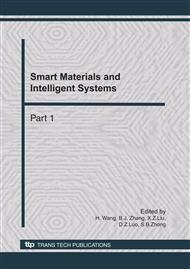p.211
p.217
p.222
p.227
p.233
p.239
p.244
p.249
p.255
Application of Artificial Neural Network for Cotton Boil Spoiling Disease Prediction
Abstract:
Based on the database of cotton boil spoiling disease in Xinxiang, a computerized intelligent expert system was established by using the Reverse Model of artificial neural network. With its speediness, robustness and 100%predicting accuracy, the system can be used as an effective method to predict the trend of cotton diseases. In recent years, we have seem some reports for which use artificial neural network system to forecast the disease of crops, but the artificial neural network using for predicting cotton boil spoiling disease have not been seen yet. Xinxiang is a city of Henan province of china, according to the survey materials of 10 years, the high output cotton boil spoiling disease break out every 4 years, the average quantity is 1.53, the rate of boil spoiling disease is 11.84%, so the loss is 168.28 . In order to prevent the cotton boil spoiling disease, we should forecast the disease, by doing this, it can increase quantity and quality of the cotton.
Info:
Periodical:
Pages:
233-237
Citation:
Online since:
October 2010
Authors:
Price:
Сopyright:
© 2011 Trans Tech Publications Ltd. All Rights Reserved
Share:
Citation:


